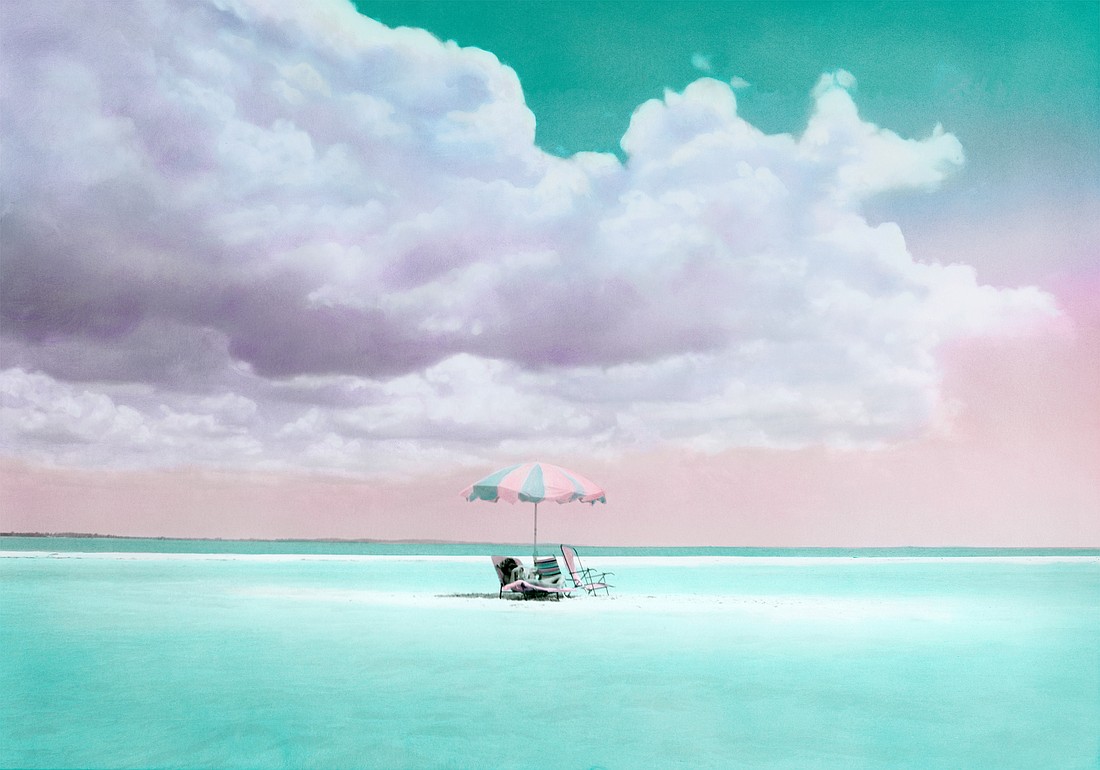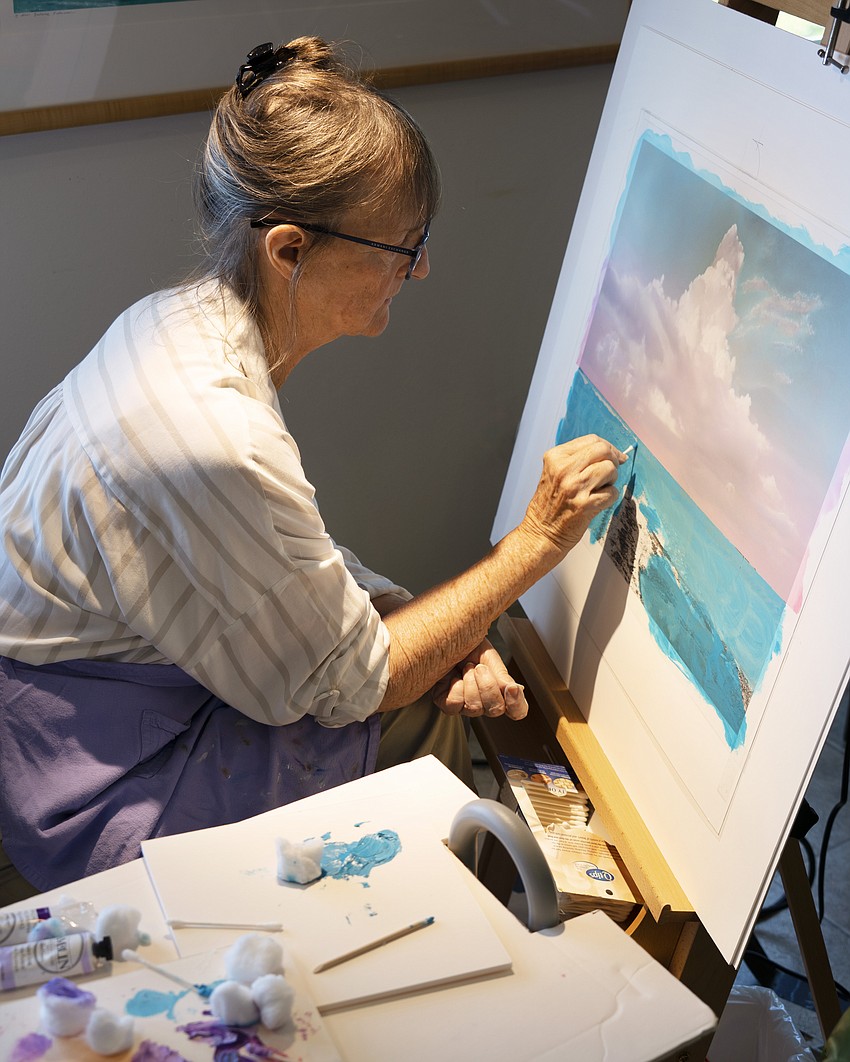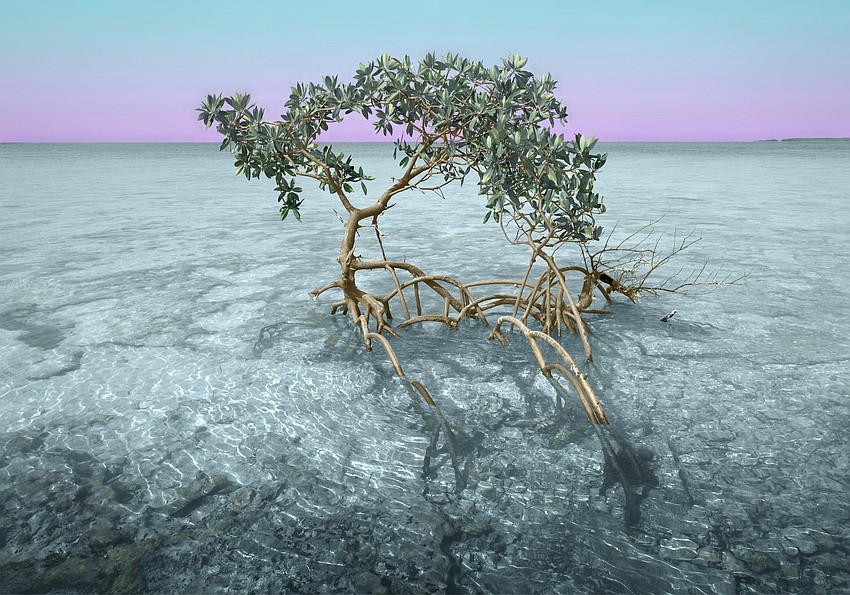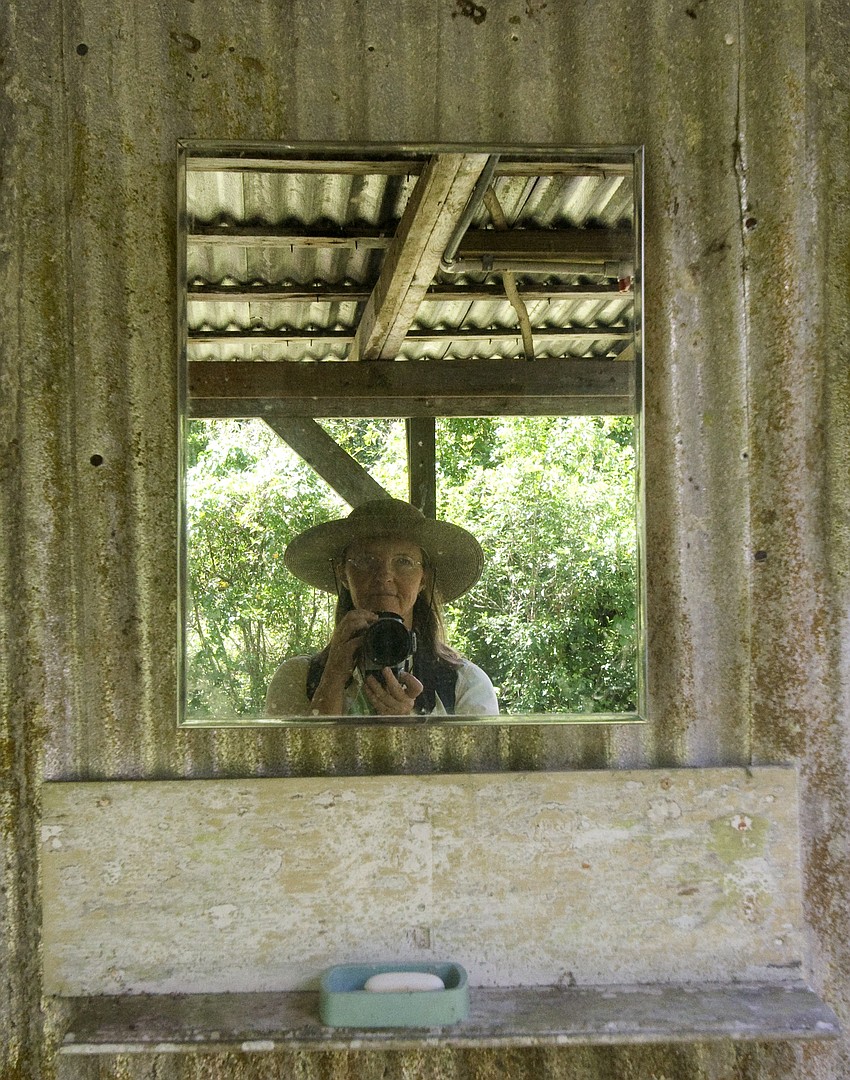- July 26, 2024
-
-
Loading

Loading

"You're wearing my colors," exclaims Niki Butcher when a visitor wearing an aqua and pink dress arrives at the Venice gallery she shares with her husband, photographer Clyde Butcher.
Niki's pastel-tinted photographs have their own room in the gallery, which is dominated by the massive black-and-white works of her husband.
Clyde' stark environmental photography is often compared to that of the legendary Ansel Adams and he cites Adams as an influence on his work. Adams is known for his black-and-white photos of the American West while Butcher has received acclaim for documenting the deep interior of Florida.
Niki's photographs also capture nature. It makes sense since the Butchers own a home and studio in Big Cyprus National Preserve in Ochopee. They've also shared cars, campers and boats in their 60-year journey together, which began in Palo Alto, Calif.
Like her husband, Niki starts out by taking a black-and-white photograph. But then she applies pastel pigments to the print and uses Q-tips and cotton balls as paintbrushes. What’s left behind is a candy-colored dream.
Earlier this year, Niki published her first book, "Daydreaming," which brings together her photographs spanning more than five decades.
When you look at Niki's work, you are drawn back in time to the days when studio photographers painted rosy cheeks and pink lips on their black-and-white portraits.

Step inside the gallery room with Niki's work and you'll discover that the much-ballyhooed Big Sky of Montana has nothing on the panoramas of Florida, especially when they're enhanced by the artist. In addition to large photos of mangrove, cypress and palm trees and idyllic sandy beaches, Niki's room and her book feature smaller scenes of Old Florida.
Run-down fishing shacks, general stores selling a little bit of everything and salty, sun-dried characters are still around despite the Sunshine State's breakneck development. Long after they're gone, these vestiges of Old Florida will live on in Niki's photographs.
When Niki began photographing dilapidated Art Deco hotels in Miami in the late 1970s and early 1980s before gentrification, she tinted the buildings with shades of pink and turquoise. In real life, many of them were painted dreary shades of grey and green. As the hotels were renovated, Niki's pastel palette was adopted.
However, after Miami's Art Deco Historic District was established in 1979, largely due to the efforts of Barbara Baer Capitman, the candy colors had to be abandoned because they weren't historically correct, Niki says. But you can still see cotton-candy pink and aquamarine hotels along Collins Avenue in "Daydreaming."
For a woman whose creations depend upon embellishment, Niki is remarkably free of artistry. She doesn't try to smooth out the rough edges of her life.
At 78, Niki's not in a hurry, but maybe she never was. She's delicate but not frail and appears ready for whatever life sends her way. She's the able first mate to Clyde's skipper.
For many years, Niki was too busy helping with Clyde's business and tending to her household to be a real artist. But then fate intervened. As she recounts the story of her life, she pauses and asks: "Do you know what happens to a marriage when a child dies?"
Yes. Very few survive. What's more, siblings also carry the weight of the loss.
Niki's transformation from helpmeet to artist came after her son, Ted, was killed by a drunk driver in 1986. "Not long after Ted died, we were booked at an arts show in Ann Arbor, home of the University of Michigan," she recalls. "Being around all those young people got me missing Ted so much."
While the Butchers were in Ann Arbor, Niki met a young man in a wheelchair who was cheerful and did not appear to feel sorry for himself because he was disabled.
Shortly after that encounter, Niki said decided to stop taking pictures of Teddy bears, rocking chairs and other saccharine subjects, work that was designed to open wallets at art shows.
She decided to create art that spoke to her. "It was Ted who helped me see what I needed to do," Niki says.
Like many people of their generation, the Butchers didn't start out with a goal or destination in mind. They knew they wanted a creative, interesting life with children, travel and money to support their family. They didn't know exactly what it would look like.

When they got married in 1963 after meeting on a double date, Niki had studied fine art at a junior college and Clyde was working as an architect. He was the breadwinner; photography was just a hobby.
But then he lost his job in one of California's periodic real estate busts. A friend suggested that Clyde could earn money by taking down his photographs hanging on the walls of the Butcher house and selling them at an upcoming art fair.
By this time, the couple had moved to Los Angeles from Northern California. Clyde's photographs found favor with Angeleno art lovers. "He made more in that one weekend that he had in a whole month as an architect," Niki says.
Clyde's photographs were so popular that a friend approached him about starting a business to sell reproductions of Clyde's images through department stores like Montgomery Ward and J.C. Penney. "Back then, photography wasn't really considered art so we put a clock in the corner and they became wall clocks," Niki says.
Fast forward a few years.The Butchers and their financial partner own a company called Eye Encounter based in Akron, Ohio, with 200 employees.
Why Akron? "At that time before the big migration to the South, Akron was within reach of 50% of the U.S. population. That made it an excellent distribution center," she says.
You won't hear Niki talking trash about Akron. The deindustrialization and offshoring that gave rise to the Rust Belt hadn't happened yet. "It was a nice place to live, although the weather could be pretty bad," she recalls.

After selling Eye Encounter to a corporation, the Butchers decided to hit the road and then the sea, all the while raising two kids. Along the way, Clyde gave up color photography and destroyed all his negatives. According to Niki, he lost the rights to most of his images when they sold their company.
As former Californians, the Butchers love sunshine, the ocean and natural beauty. They didn't want to go home after selling their business in Ohio so they decided to give Florida a try. But they didn't get it right the first time — they settled on the East Coast. The people were nice enough, Niki says, but she couldn't get her bearings.
"I was used to sunsets over the ocean. I really liked that. Once we moved to the Gulf Coast, I was happy again. The sun set in the right place," she says.
The turning point in their lives, though, came when they were able to buy a property in Big Cypress, which served as a stepping stone into Florida's dark and wild interior. Clyde found the landscape that would cement his reputation as an environmental photographer.
"We went from being close to 50% of the U.S. to having our nearest customer 50 miles away," Niki jokes about their move to the swamp, which provided a remote place to heal from the loss of their son.
But before visitors started making the pilgrimage to the Butcher Gallery in Big Cypress, Clyde and Niki still had to hit the road to sell their art. Long before social media's #vanlife craze, the Butchers were parking their camper in places like Central Park West in New York City while attending art festivals.
Niki remembers how her daughter, Jackie, awakened in the middle of the night in the camper in New York to the sounds of two men plotting to kill someone. Evidently they didn't realize the camper was occupied. "We've had some wild times," Niki said.
Wherever the Butchers travel, Niki's always happy to come back to Florida and its "weird and wonderful people," she says. "There's nothing like it."

A visitor to a crowded open house in May at Clyde Butcher's Venice gallery, located in a warehouse district, could rightfully assume that their success was predestined. That would be a mistake, Niki says.
"When you go to art fairs, you meet so many talented people. Why did we succeed with two galleries while other people are still selling at art shows? Because we had the experience of running a business," she says.
These days, the Butchers' daughter, Jackie, and son-in-law, Neal Obendorf, play a major part in the business, particularly since Clyde's recent stroke. Jackie was the editor and catalyst of "Daydreaming" and has helped her mom promote the book. Even the Butchers' grandkids are getting involved in the family business.
As Clyde and Niki celebrate their 60th wedding anniversary this year, the couple knows their legacy is in good hands.